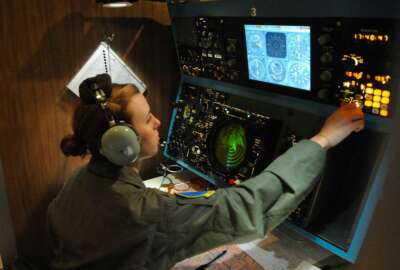
Army in midst of using pitch days to bring in nontraditional companies and technologies
The Army's xTechSearch is working on its fourth iteration.
Best listening experience is on Chrome, Firefox or Safari. Subscribe to Federal Drive’s daily audio interviews on Apple Podcasts or PodcastOne.
The Army is in the midst of its fourth competition to bring in small and nontraditional businesses with beneficial technologies to the service that may not work with the government in other circumstances.
The Army’s acquisition office set up xTechSearch in 2018.
“We are looking for ways we can make it really easy for small businesses to pitch new ideas to the government,” Matt Willis, director for laboratory management in the Army’s acquisition, logistics and technology office, told Federal News Network. “We can’t possibly know the spectrum of technologies that are out there.”
The competition is set up in the pitch day fashion used by the Air Force. Businesses meet with government officials and explain their ideas. xTechSearch is different in that it doesn’t put companies on contract right away, but rather takes them through phases.
It’s almost like a mini acquisition cycle: companies submit white papers in the first phase.
“We have a panel of Army experts from the labs and from the program executive office and from the acquisition office review these white papers and then we downselect to about 50 or so companies,” Willis said.
The Army separates the companies into bins based on topics like soldier lethality, medical technology and air and missile defense.
Each company chosen to move on gets a $5,000 prize to make up for costs of engaging with the government and to help mature their technology.
“For many of these small businesses there’s one or two people in these companies, they are cash flow negative, paycheck to paycheck,” Willis said. “If the government has an industry day, but they have to travel on their dime to come and talk with us then that might not be tenable.”
xTechSearch 4.0 is currently in its second phase, where the roughly 50 businesses show up with a more developed technology. The Army was in Playa Vista, California last week, in Austin this week, and will be in Philadelphia next week. The Army judges listen to 25-minute pitches to decide if the technologies will be revolutionary and impactful for the service.
“We are truly looking for those kernels of innovation that will provide a leap ahead capability for the Army,” Willis said.
There are four phases in total, where the demands get higher on the companies and the number of companies is reduced until there is one grand prize winner of $250,000.
Zeke Topolosky, an engineer at the Army Research Lab, said that prize is about the same as a Small Business Innovation Research grant. Topolosky said one of the benefits is that the Army makes meaningful connections with a wide variety of companies, even those that don’t win.
xTechSearch 3.0’s winner was Lumineye, a Boise, Idaho-based company that works on a portable wall-penetrating radar.
Toposky said this year there are technologies ranging in a wide swath of areas.
“It’s kind of all over the map initially,” Topolosky said. “We saw some real novel medical technologies out in LA. Some neat ways to diagnose diseases, viruses and infections out in the field where normally you’d have to go back to the lab. We’ve seen a lot of technologies that can help soldiers in training, cut down in cost and reduce ammunition.”
Topolosky said he also saw a lot of 3-D mapping and counter drone technology.
The Army will announce its grand prize winner this October at the Association of the United States Army annual meeting in Washington.
Copyright © 2025 Federal News Network. All rights reserved. This website is not intended for users located within the European Economic Area.
Scott Maucione is a defense reporter for Federal News Network and reports on human capital, workforce and the Defense Department at-large.
Follow @smaucioneWFED





